Buttonquail, often referred to as “little brown jobs” due to their unassuming appearance, are a fascinating group of small, ground-dwelling birds belonging to the family Turnicidae.
Despite their diminutive size, typically measuring between 12 to 20 centimeters in length, these birds boast a remarkable array of adaptations and behaviors.
Found across various habitats spanning from grasslands to forests, buttonquail are adept at blending into their surroundings, aided by their cryptic plumage and elusive nature.
Despite their terrestrial habits, they possess short, rounded wings enabling quick bursts of flight when necessary. Their diet comprises primarily of seeds, insects, and vegetation found amidst the ground cover.
Buttonquail are known for their intricate courtship rituals and complex social structures, adding depth to their already intriguing nature.
Studying these elusive birds unveils a world of mystery and adaptation within the avian kingdom.
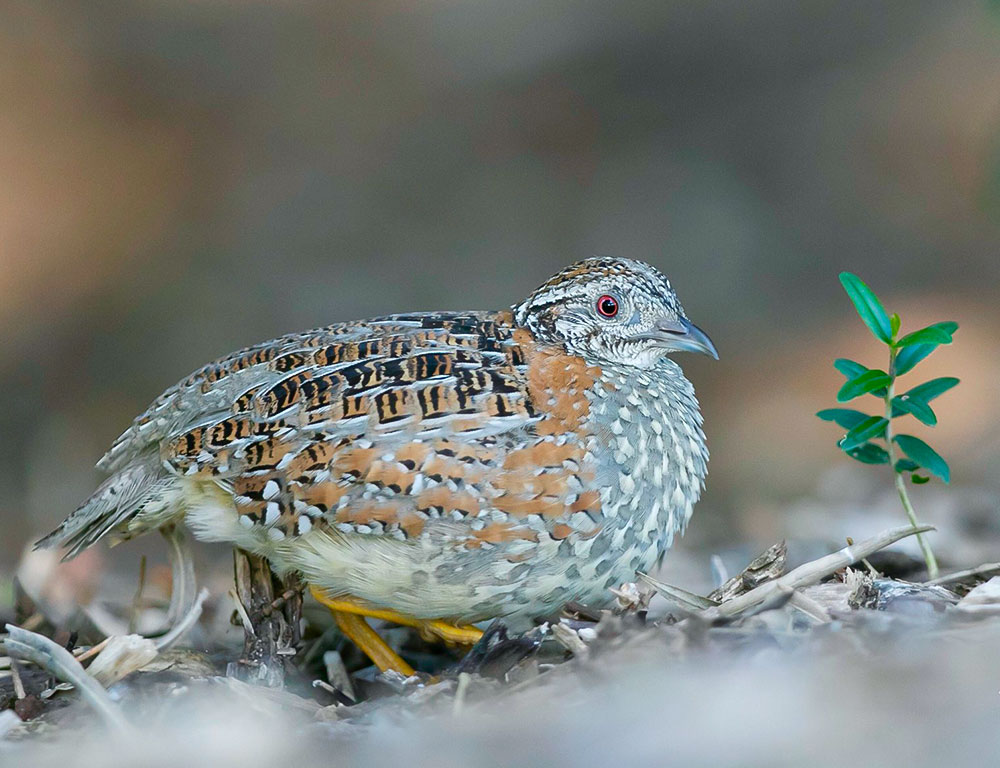
Characteristics Of Buttonquail
Buttonquails, also known as hemipodes or bustard-quails, are small ground-dwelling birds belonging to the Turnicidae family. Despite their name, they are not true quails but are often grouped with them due to their similar appearance and habits.
Buttonquails exhibit several distinctive physical characteristics that set them apart from other bird species.
Plumage
Buttonquails typically have cryptic plumage with mottled patterns, which provides excellent camouflage against their grassland and scrubland habitats. Their coloration varies between species, ranging from brown and gray to rufous and buff.
Short Legs
These birds have short, sturdy legs adapted for terrestrial locomotion. Their legs are well-suited for running through dense vegetation and scrubland for food and shelter.
Rounded Wings
Buttonquails have rounded wings that are relatively short compared to their body size. While they can fly, they primarily rely on their legs for movement and are more often seen running than flying.
Small Size
Buttonquails are among the most miniature game birds, with adults typically measuring around 15-20 centimeters in length. Their diminutive size allows them to navigate through dense vegetation and grasslands easily.
Stout Body
These birds have a compact and stout body structure, aiding their agility and maneuverability on the ground. Their body shape is well-suited for foraging in thick vegetation and avoiding predators.
Reddish Bill
Buttonquails have short, slightly curved bills that are reddish in coloration. Their bills are adapted for pecking and probing in the soil for seeds, insects, and small invertebrates, which form the bulk of their diet.
Cryptic Markings
In addition to their cryptic plumage, Buttonquails often have distinctive markings, such as facial stripes or patterns on their wings and back. These markings help further camouflage them against their natural habitat and protect them from predators.
Distribution And Habitat
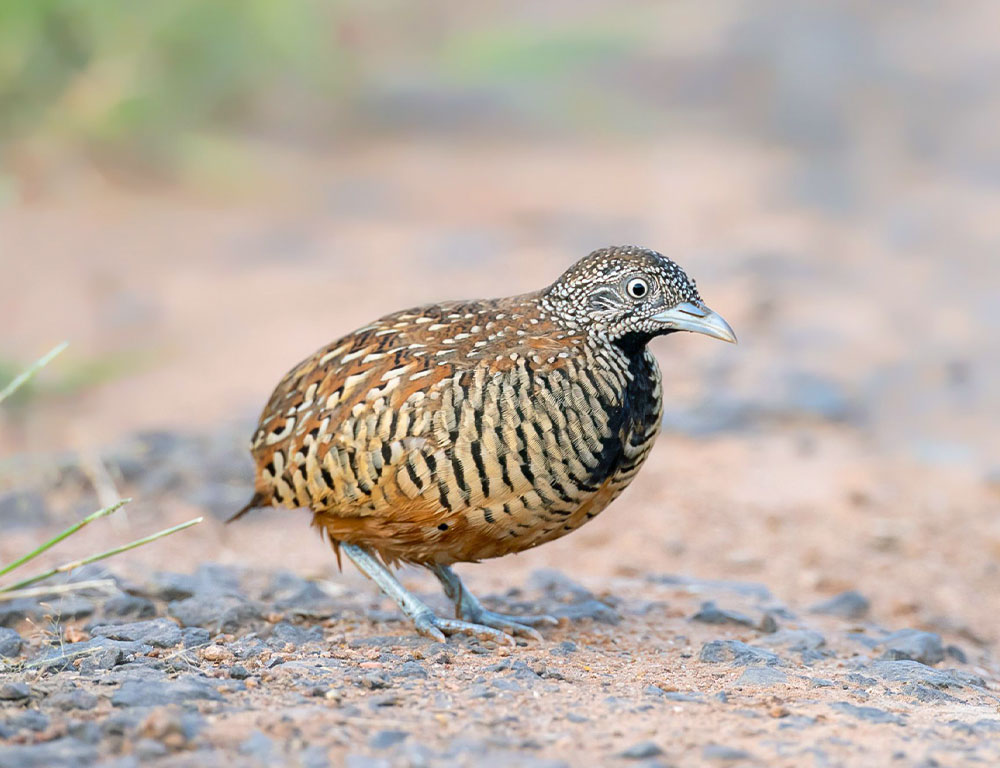
Buttonquails are distributed worldwide, including in Africa, Asia, Australia, and parts of Europe. They inhabit a wide range of habitats, such as grasslands, savannas, scrublands, and agricultural fields, preferring areas with dense vegetation for cover.
Species
There are several species of Buttonquail, each with its unique geographic range and habitat preferences. Common species include the Common Buttonquail (Turnix sylvaticus) and the Yellow-legged Buttonquail (Turnix tanki).
Breeding
Buttonquails are monogamous breeders, forming pairs during the breeding season. They construct simple ground nests concealed in vegetation, where females lay eggs incubated by both parents.
Behavior And Ecology
Buttonquails are primarily ground-dwelling birds. They spend much of their time foraging for seeds, insects, and small invertebrates in dense vegetation. They are often solitary or found in pairs, and their cryptic plumage provides effective camouflage against predators.
Health
Like many bird species, Buttonquails may face threats from habitat loss, predation, and human disturbances. Conservation efforts are crucial to protect their habitats and ensure their long-term survival.
Taxonomy
Here’s a table outlining the taxonomy of the Buttonquail (Turnicidae):
| Taxonomy Level | Classification |
| Kingdom | Animalia |
| Phylum | Chordata |
| Class | Aves |
| Order | Charadriiformes |
| Family | Turnicidae |
Nesting Habit
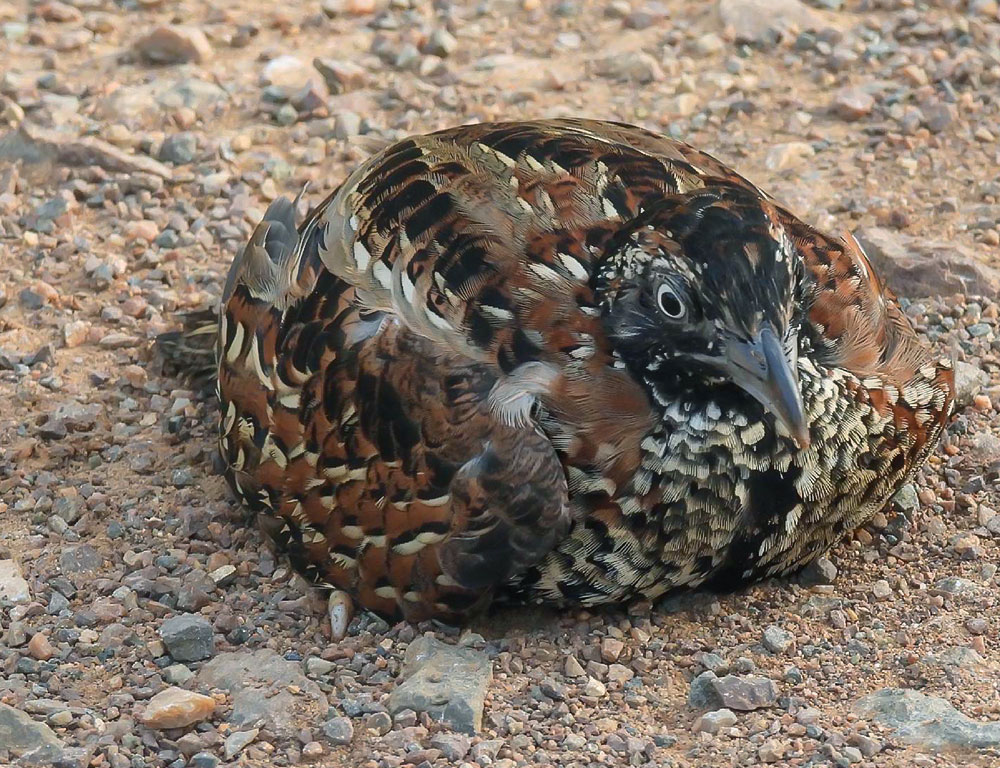
Here’s a table outlining the nesting habits of Buttonquails:
| Nesting Habit Feature | Description |
| Nesting Sites | Ground-dwelling birds construct nests in grassy or shrubby areas, often concealed under dense vegetation. |
| Nesting Material | Nests are superficial scrapes in the ground, lined with grass, leaves, and other plant materials. |
| Nesting Behavior | Generally, solitary breeders, both male and female, may take part in nest construction and incubation. |
| Nesting Season | Breeding season varies depending on location and environmental conditions, typically during warmer months. |
| Nesting Eggs | Clutches usually consist of 3-7 eggs, which are oval-shaped and colored to blend with the surrounding soil. |
| Incubation Period | Eggs are incubated for about 14-16 days, with both parents sharing incubation duties and chick-rearing. |
| Nesting Chick-Rearing Duties | After hatching, both parents care for the chicks, providing food and protection until they fumble. |
In Culture
Buttonquails have cultural significance in various societies, often featuring in folklore, myths, and traditional stories. They may symbolize traits such as secrecy, agility, and survival in adversity.
Survival
Despite their small size and cryptic nature, Buttonquails are adept at surviving in diverse habitats. Their ability to blend into their surroundings and adapt to changing conditions contributes to their success as ground-dwelling birds.
Conservation Status
The conservation status of buttonquails varies across their 18 species. Although most are not currently threatened, approximately 28% face risks due to habitat destruction and introduced predators.
One species is listed as Near Threatened (NT), one as Vulnerable (VU), two as Endangered (EN), and one as Critically Endangered (CR), reflecting the urgent need for conservation efforts to protect these vulnerable populations.
The Ranging Map Of Buttonquail
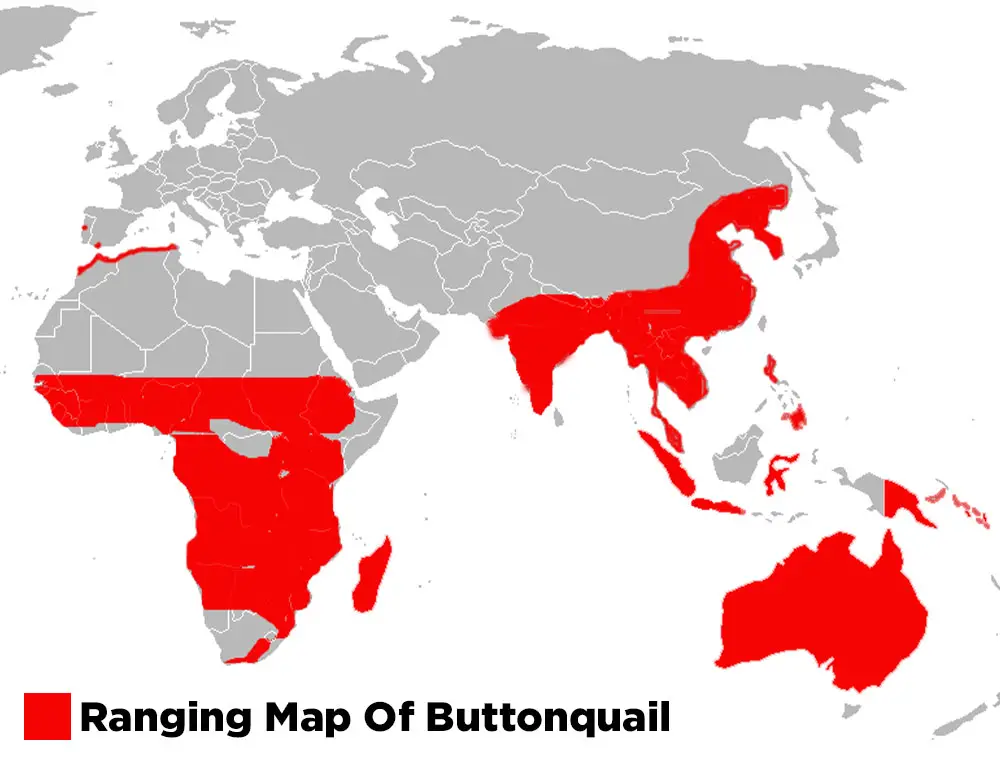
The ranging map of the Buttonquail (Turnix spp.) illustrates the diverse distribution of these ground-dwelling birds across various continents and ecosystems worldwide.
Buttonquails are found in a wide range of habitats, from the grasslands of Africa and Asia to the savannas of Australia and the agricultural fields of Europe.
Their distribution may vary between species and subspecies, with some Buttonquail populations restricted to specific regions or habitats while others have broader ranges.
This ranging map highlights the adaptability of Buttonquails to different environmental conditions, from arid deserts to humid tropical forests.
While Buttonquails are generally elusive and cryptic birds, their presence in diverse ecosystems underscores their ecological significance as seed dispersers and insect predators.
By mapping their distribution, scientists gain valuable insights into the conservation needs and habitat requirements of Buttonquail populations worldwide.
What Are Button Quail Good For?
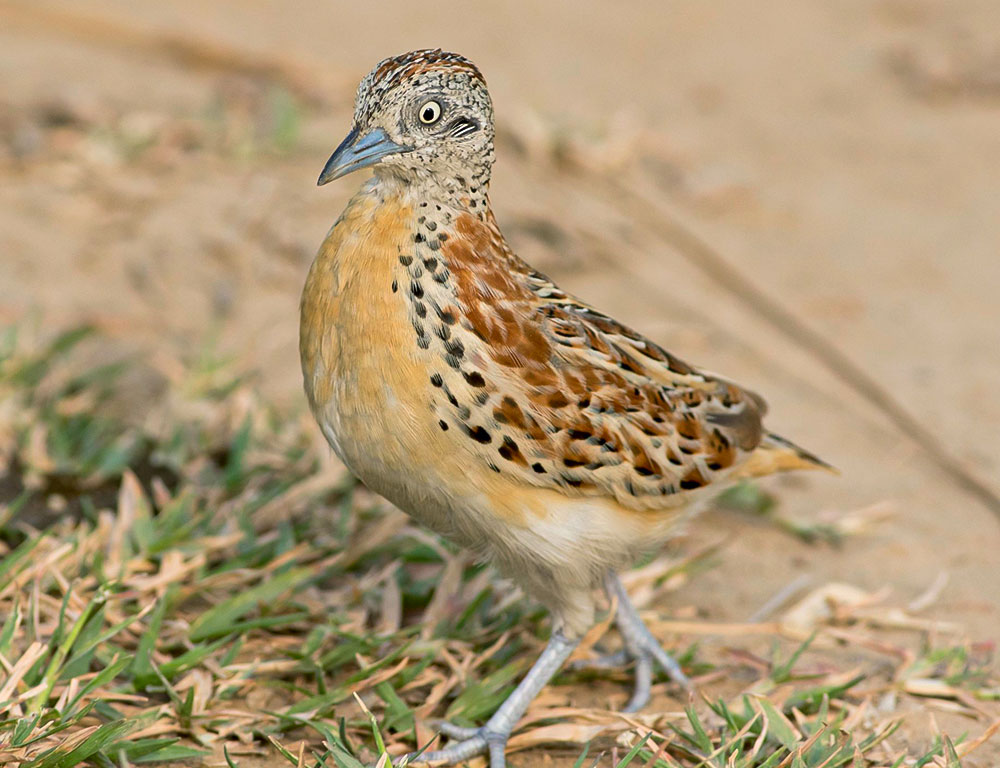
Button Quail, also known as Chinese Painted Quail or King Quail, serves various purposes beyond their ornamental appeal. They possess unique qualities that make them valuable in different contexts.
Aviary Birds
Button Quail are popular aviary birds due to their small size, colorful plumage, and peaceful demeanor. They add charm and diversity to aviaries and are relatively easy to care for, making them ideal for hobbyists and bird enthusiasts.
Insect Control
In agricultural settings, Button Quail are employed as natural pest controllers, as they have a voracious appetite for insects and small invertebrates. Their foraging behavior helps to reduce pest populations, offering a sustainable and eco-friendly pest management method.
Educational Tools
Button Quails are often used in educational settings to teach students about avian biology, behavior, and care. Their small size and docile nature make them suitable subjects for hands-on learning experiences, fostering an appreciation for nature and wildlife.
Therapeutic Pets
Some individuals keep Button Quail as therapeutic pets, finding solace and relaxation in observing their gentle behavior and soothing calls. Their presence can provide comfort and companionship, particularly for those seeking emotional support or stress relief.
Research Subjects
Button quails are also used in scientific research for animal biology, behavior, genetics, and physiology studies. Their small size and adaptability make them convenient subjects for experimental research, contributing to our understanding of various scientific phenomena.
Artistic Inspiration
Button Quail inspires creativity in artists and craftsmen, with their intricate plumage patterns and delicate features often depicted in paintings, sculptures, and other forms of artistic expression.
Their beauty and charm captivate artists and enthusiasts, serving as muse and motif in various artworks.
Species Conservation
While Button Quail is not typically considered threatened, some conservation efforts focus on preserving their genetic diversity and natural habitats.
Conservation initiatives aim to ensure the long-term survival of button quail populations in the wild by raising awareness about these birds and their ecological importance.
Button Quail serves diverse purposes beyond their role as ornamental birds, contributing to agriculture, education, therapy, research, art, and conservation efforts.
Their versatility and unique qualities make them valuable assets in various contexts, enriching our lives and enhancing our understanding of the natural world.
What Do Buttonquail Eat?
Buttonquails are small ground-dwelling birds in the family Turnicidae. They eat a diverse diet of various seeds, insects, and small invertebrates.
These birds play a vital role in ecosystem functioning and contribute to pest control and seed dispersal in their habitats.
Seeds
Buttonquails feed on various grass, grains, and other plant seeds in their grassland and scrubland habitats.
They use their bill to peck and probe in the soil for seeds, which comprise a significant portion of their diet.
Insects
Insects are essential to the Buttonquail’s diet, particularly during the breeding season when protein-rich food is needed for nesting and chick-rearing.
They consume many insects, including beetles, grasshoppers, caterpillars, and ants, which they catch by foraging on the ground or probing in the soil.
Worms
Buttonquails also feed on earthworms and other small invertebrates found in the soil. They use their bill to probe and extract worms from the ground, supplementing their diet with valuable protein and nutrients.
Grains
Buttonquails may consume grains such as rice, wheat, and millet in agricultural areas, foraging in fields, and stubble for spilled or fallen grains. While not their primary food source, grains provide an additional food option, especially in human-modified landscapes.
Berries And Fruits
During the fruiting season, Buttonquails may supplement their diet with berries, fruits, and other plant materials. They may forage in shrubby areas or under fruit-bearing trees to consume ripe fruits and berries.
Snails And Slugs
Buttonquails feed on small mollusks, such as snails and slugs, which they may encounter while foraging on the ground. These soft-bodied invertebrates provide additional protein and nutrients to their diet.
Small Reptiles And Amphibians
Occasionally, Buttonquails may prey on small reptiles and amphibians, such as lizards, frogs, and tadpoles, especially in areas where their habitats overlap.
While not a primary food source, these vertebrates may supplement their diet, particularly during the breeding season when protein requirements are higher.
Overall, buttonquails’ diverse diets reflect their adaptability to different food sources and habitats, making them important contributors to ecosystem dynamics and functioning.
Their role as seed dispersers, insect predators, and consumers of small invertebrates underscores their ecological significance in grassland and scrubland ecosystems.
Conclusion
Buttonquails exemplify the intricate balance between adaptation and vulnerability within the avian world.
Despite their unassuming appearance, these ground-dwelling birds possess remarkable behavioral and physiological adaptations that enable their survival across diverse habitats.
Efforts to conserve buttonquail populations are crucial to maintaining the integrity of ecosystems they inhabit and preserving the biodiversity of avian species worldwide.
By addressing the factors contributing to their decline and implementing targeted conservation strategies, we can ensure the continued existence of these fascinating birds for future generations to appreciate and study.
Buttonquails serve as a poignant reminder of the interconnectedness of all life forms and the importance of stewardship in safeguarding our natural heritage.